Where: JCU lab
Background: This week we learned about snakes. All snakes lack: a squamosal bone in the skull; sclerotic ossicles (but instead have transparent scales called spectacles covering the eyes); a tympanum; a eustachian tube; and a left lung (although some species have a reduced left lung). All snakes are carnivorous and have pleurodont dentition with lingual attachments of teeth.
The clade Serpentes (or Ophidia) is broken up into two main groups: Scolecophidia (worm snakes and blind snakes) and Alethinophidia ("true" snakes). Alethinophidia is further divided into Henophidia ("old" snakes) and the monophyletic Caenophidia ("new" snakes).
Skull Anatomy
The kinesis and skull anatomy of snakes are some of the most fully developed evolutionary adaptations that separate them from other lepidosaurs. Snakes demonstrate streptostyly, where there is kinesis not only where the quadrate and articular join, but also where the quadrate articulates with the supratemporal bone. This permits snakes to widely spread their jaws. In addition to mobility, the quadrate is elongated, which allows the jaw to further drop down. Other areas of skull kinesis occur at the front of the lower jaw, where the detached dentary bones are free to swing up and down. On some venomous snakes, the front of the maxilla swings forward to expose the fangs that inject venom. These adaptations are significant because they allow snakes to consume prey larger than themselves.
Dentition
There are four major categories of teeth within Serpentes. Most teeth are curved backwards to help immobilize prey, and there are rows of palatine and pterygoid teeth that can move independently.
Aglyphous teeth are basic non-grooved teeth that are found on every species of snake, including venomous. As indicated from the picture, they are curved towards the throat, aiding in one-way movement of prey.

Opisthoglyphous teeth, found in Colubridae, are slightly curved or straight teeth in the posterior maxilla. They can have a conspicuous groove to facilitate some venom injection. Snakes exhibiting this type of dentition are so called “rear-fanged.”
Proteroglyphous teeth, found in Elapidae, are straight fangs fixed in the front of the maxilla.

Proteroglyphous fangs of Dendroaspis angusticeps
Solenoglyphous teeth, found in Viperidae, are the most derived teeth within Reptilia, and are hollow to allow delivery of venom from venom glands. These teeth can fold back into the mouth after being protracted from a highly kinetic maxilla.

Within the Henophidia our lab had representatives of Pythonidae and Boidae.
HENOPHIDIA

Pythonidae: 8 genera
Distribution: Subsaharan Africa, south and southeast Asia, Australia
Characteristics/Biology: All pythons have cranial infrared receptors in interlabial pits. Ventrally, extremely reduced hindlimbs exist as cloacal spurs. Pythons can tolerate a range of habitats from deserts to rainforests. All are oviparous (laying cleidoic eggs) and females have been shown to coil around the eggs for embryonic incubation.
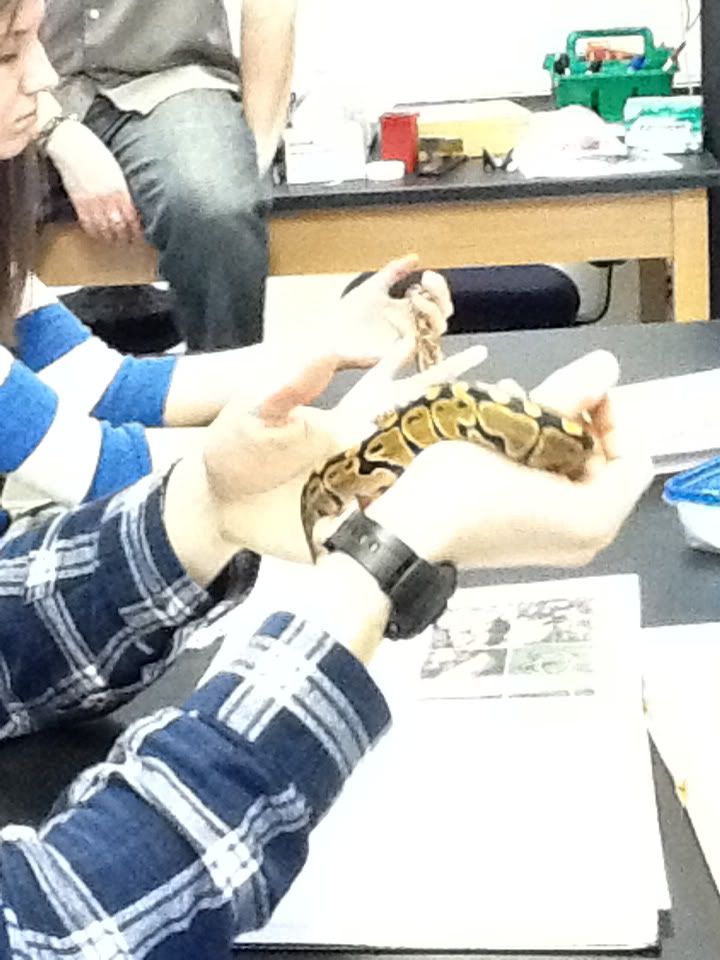
Boidae: 11 genera within two subfamilies (Boinae and Erycinae)
Distribution: Western North America to subtropical South America, West Indies, central Africa to south Asia, Madagascar
Characteristics/Biology: Most boids, like the related pythons, have cranial infrared receptors in interlabial pits, and all boids have reduced hindlimbs as cloacal spurs. Boids are mainly nocturnal, aglyphous (ungrooved), and are viviparous, giving birth to live young. Individuals of Boinae are mostly arboreal while erycines are semifossorial.
CAENOPHIDIA - Colubridae, Viperidae, and Elapidae
Colubridae
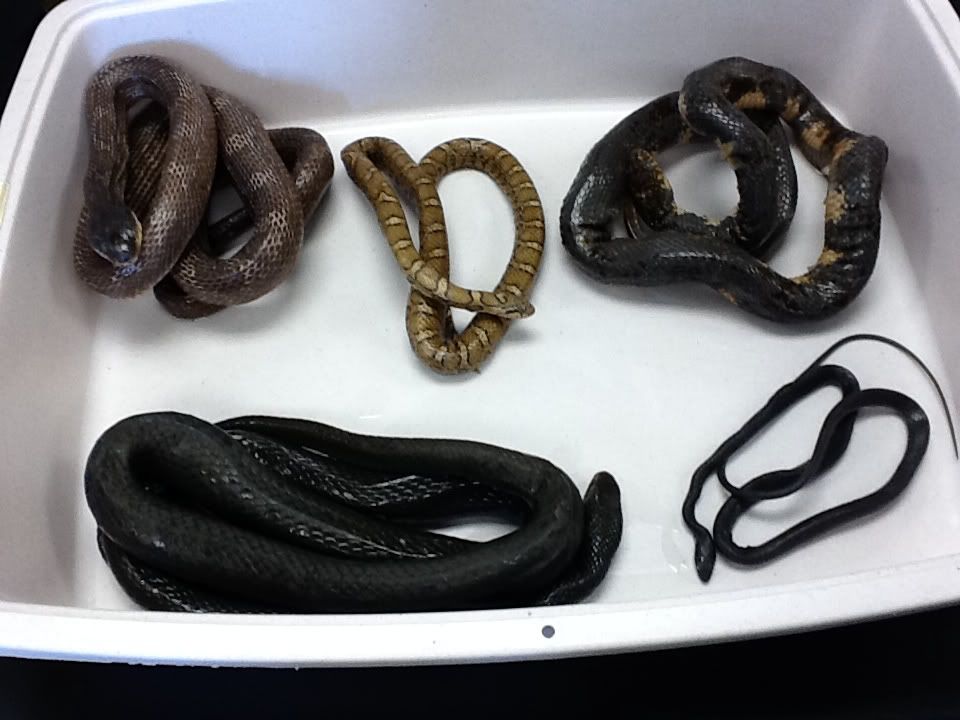
Colubrinae in Ohio
Colubridae has over 290 genera with the most speciose subfamily (Colubrinae) containing over 100 genera.
Distribution: Worldwide except Antarctica and oceanic islands
Characteristics/Biology: Due to the diversity of Colubridae, there are very few uniting characteristics, other than having opisthoglyphous (rear-fanged) teeth and lacking cranial infrared receptors.
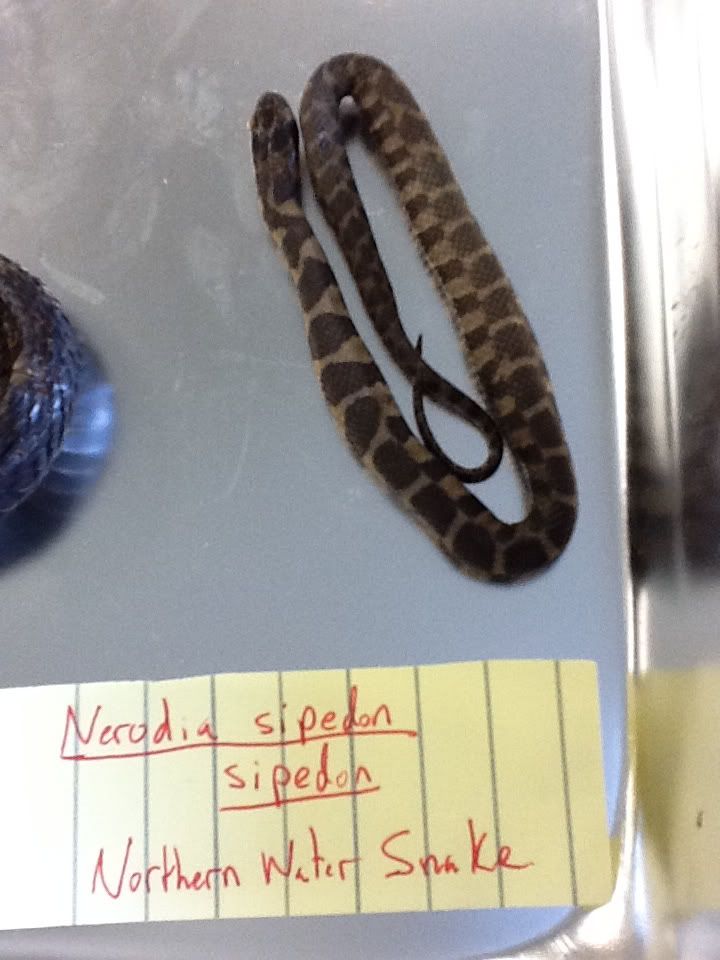
Nerodia sipedon - natricine
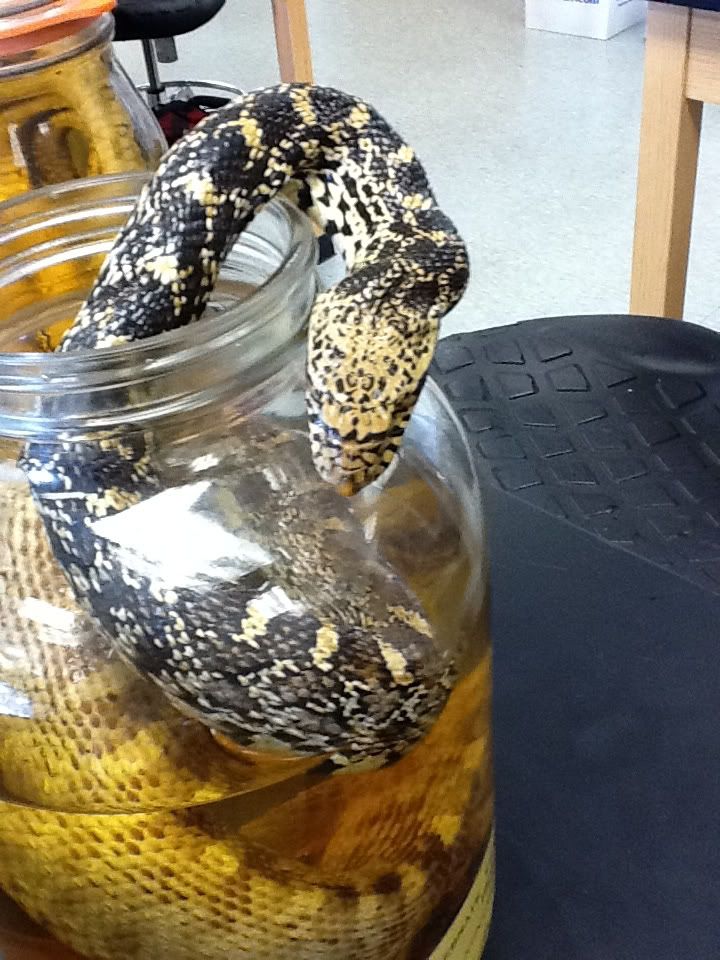
Pantherophis vulpinus of Colubrinae
Viperidae - 40 genera
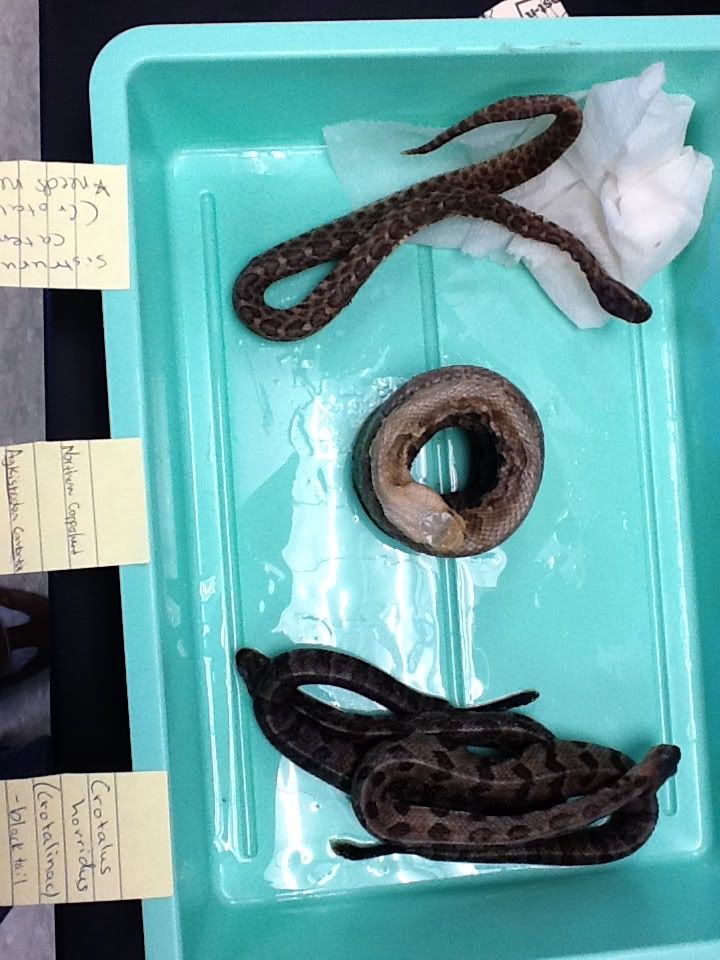
Ohio vipers
Distribution: Worldwide except Australia and oceanic islands
Characteristics/Biology: Vipers have solenoglyphous teeth, where a kinetic maxilla allows for fang retraction and protraction. All viperids are venomous and most have triangular heads. One subfamily (Crotalinae) has cranial infrared receptors in loreal pits, located between the nares and eye. Most viperids are nocturnally active, terrestrial, and give birth to live young.
Elapidae - 60 genera

Coral snakes

Sea snake
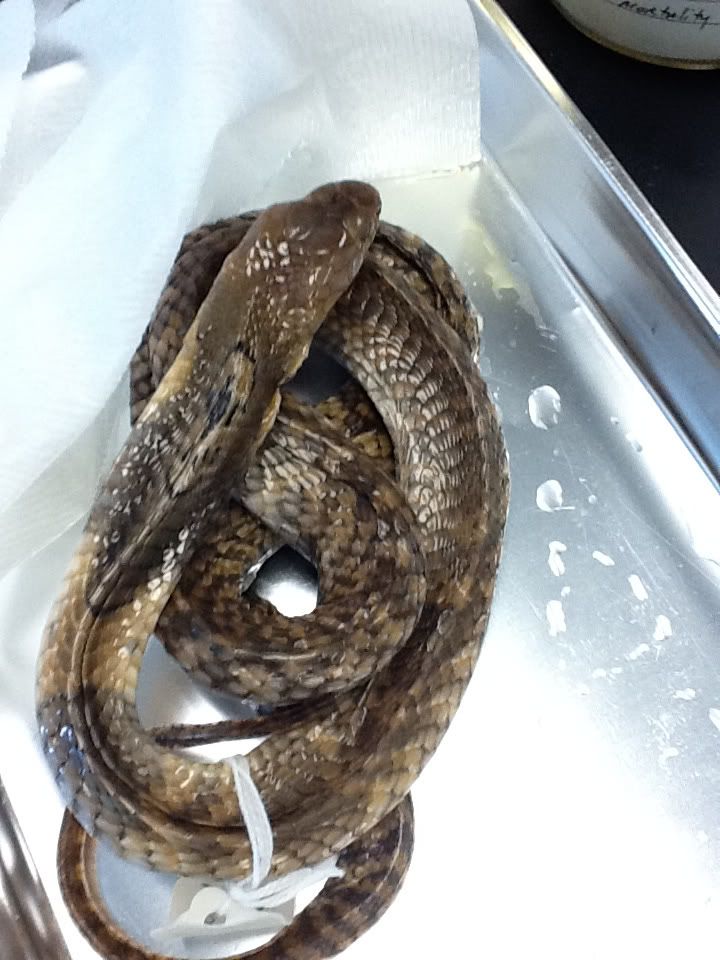
Cobra
Distribution: southern North America to southern South America, Africa, southern Asia to southern Australia, tropical Indian and Pacific Oceans
Characteristics/Biology: Elapids have proteroglyphous, or front-fanged teeth and are venomous. Elapines are mostly terrestrial but have arboreal and aquatic species. Aposematism, or warning coloration, is common in semifossorial species (e.g. coral snakes). Most elapines are oviparous. The subfamily Hydrophiinae contains terrestrial and marine snakes. True sea snakes are strictly aquatic with laterally compressed tails, a loss of enlarged ventral scales, and give birth in water (viviparous). Sea kraits are also hydrophiines, giving birth on land but spending most of the time in water.
OHIO SNAKES
COLUBRIDAE
NATRICINAE
Nerodia sipedon - brown with thick dark brown bands or blotches. The Northern Water Snake is a nonvenomous colubrid found throughout Ohio. These snakes, along with most of subfamily Natricinae, are amphibian and fish specialists.

Regina septemvittata – olive to dark brown in color with a white to yellow stripe that runs from the first to second scale row down to the rostral scales; four brown stripes that run down the ventral side of the body. The aquatic Queen Snake is a crayfish specialist.
Thamnophis sirtalis - olive to brown with stripes on scale rows 2 and 3 only. The Eastern Garter Snake may also have dorsal spots or a stripe, while other may be unstriped.

Storeria dekayi – brown with two pairs of dorsal, dark brown spots in rows. The Northern Brown Snake is a small colubrid averaging lengths of 23-33cm.
DIPSADINAE
Diadophis punctatus edwardsii - dark brown to black with a single yellow or orange ring around the neck. The Northern Ringneck reaches lengths of two feet long, feeding on insects, small amphibians, other snakes, and small lizards.

Heterodon platyrhinos – distinguished by its upturned rostrum. The Eastern Hognose Snake is opisthoglyphous, using its rear fangs to puncture toads.

Carphophis amoenus amoenus - brown dorsally and bright pink ventrally. The Eastern Worm Snake is small (19-23cm) and specializes on worms and soft-bodied insects.
Drymarchon corais - dorsally all black, faint beige coloring ventrally; looks similar to a racer, but racers have lighter ventral coloration, especially around the head. The eastern indigo is the largest North American snake.

COLUBRINAE
Opheodrys aestivus (rough green snake) - bright green dorsally, beige ventrally, long and stringy tail; found in the southern third of Ohio

Coluber constrictor (blue racer) - dark body throughout, bluish tint in some light
Pantherophis obsoletus (black rat snake) - dark body throughout; found across Ohio
P. vulpinus (fox snake) - large, speckled coloration dorsally; speckles are dark gray, body is light brown; found in northern Ohio; see pictures above
Lampropeltis triangulum (eastern milk snake) - mimic of venomous coral snake; white stripe surrounded by black lines, black lines separated by red scales; found across Ohio; see pictures above for true coral snakes
L. getula (black kingsnake) - dorsally black, speckled with beige scales; more scattered beige scales ventrally; in southern Ohio
VIPERIDAE
CROTALINAE
Agkistrodon contortrix (northern copperhead) - boa-like pattern dorsally (dark brown, brown, light brown scales); see above pictures for Boa coloration. This wet prarie specialist does NOT have a rattle and resides in southern Ohio.
Sistrurus catenatus (eastern massassauga) - light brown body with brown, leopard-like pattern; light-colored rattle; found in northern Ohio
Crotalus horridus (timber rattlesnake) - brown body with dark brown stripes around entire body; dark rattle

No comments:
Post a Comment